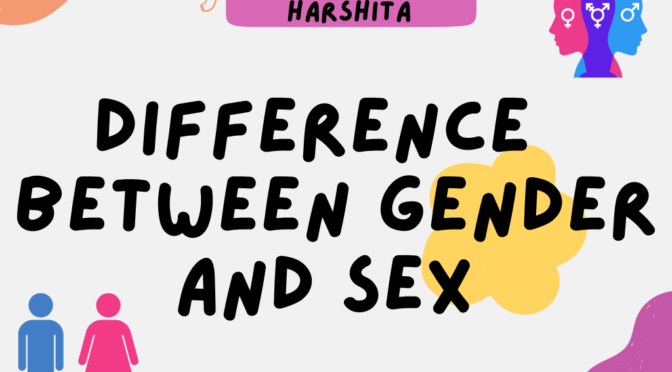The concepts of sex and gender are often used interchangeably in everyday language, but they have distinct meanings and refer to different aspects of human identity.
Here’s a detailed explanation of the difference between sex and gender:
Sex: Sex refers to the biological and physical characteristics that typically distinguish males from females. It is primarily based on reproductive anatomy and physiology. In most cases, individuals are assigned a sex at birth based on visible external genitalia, but there are instances where individuals may have intersex traits or conditions that do not fit strictly into the binary categorization of male or female.
Biological factors that contribute to sex include chromosomes (XX for females, XY for males), internal and external reproductive organs, hormonal profiles (such as estrogen and testosterone levels), secondary sexual characteristics (such as breast development or facial hair), and gametes (eggs or sperm).
Sex is generally considered a binary concept, with male and female being the traditional classifications. However, it is important to recognize that biological sex exists on a spectrum, and not all individuals fit neatly into these categories.
Gender: Gender refers to the sociocultural roles, behaviors, activities, expectations, and identities that society attributes to individuals based on their perceived sex. Unlike sex, gender is a social and cultural construct that varies across different societies and historical periods.
Gender identity refers to a person’s deeply held sense of being male, female, or something outside of the traditional binary concept. It is a deeply felt internal experience of one’s gender, which may or may not align with the sex assigned at birth. Some individuals identify as transgender, meaning their gender identity does not align with their assigned sex. For example, a person assigned male at birth may identify as a woman, and a person assigned female at birth may identify as a man.
Gender expression encompasses the outward expression of one’s gender identity through behaviors, appearances, clothing choices, and other aspects of personal presentation. It includes a wide range of gender expressions, from traditionally masculine to traditionally feminine to androgynous or gender-neutral.
Gender roles are the societal expectations and norms associated with masculinity and femininity. They encompass behaviors, attitudes, and activities that are considered appropriate or expected for individuals based on their gender. For example, societal expectations may dictate that women are nurturing and emotional while men are assertive and strong. However, these gender roles are socially constructed and can vary across cultures and societies.
It’s important to recognize that gender is not solely determined by biological factors. It is a complex interplay of biological, social, cultural, and personal factors. Individuals may identify with a gender that is different from their assigned sex, and their gender identity may be fluid or evolve over time.
Understanding the distinction between sex and gender is crucial for promoting inclusivity, respect, and understanding for individuals whose gender identity and expression may not align with societal expectations or traditional gender norms.


